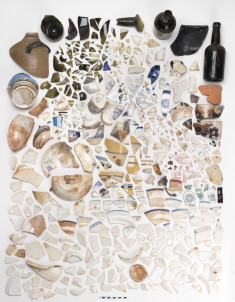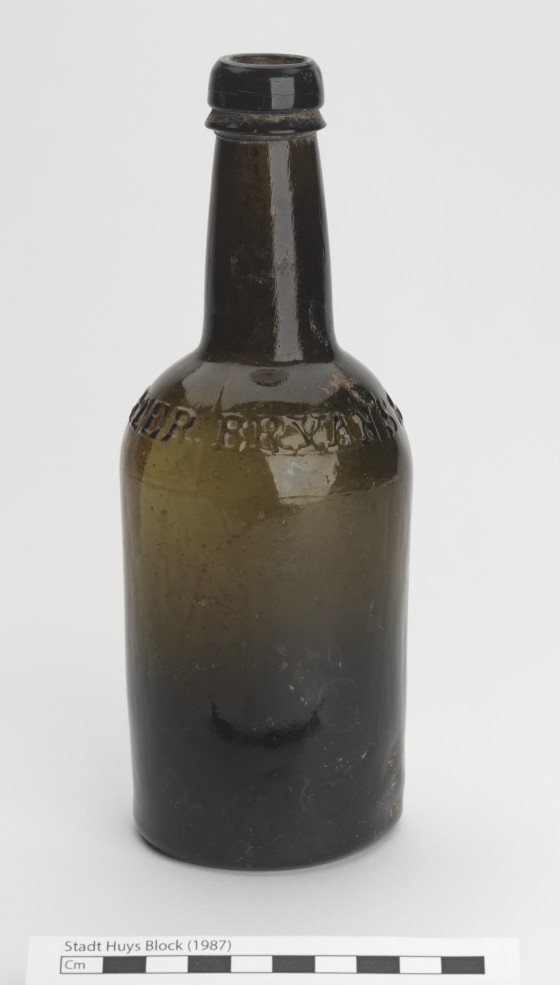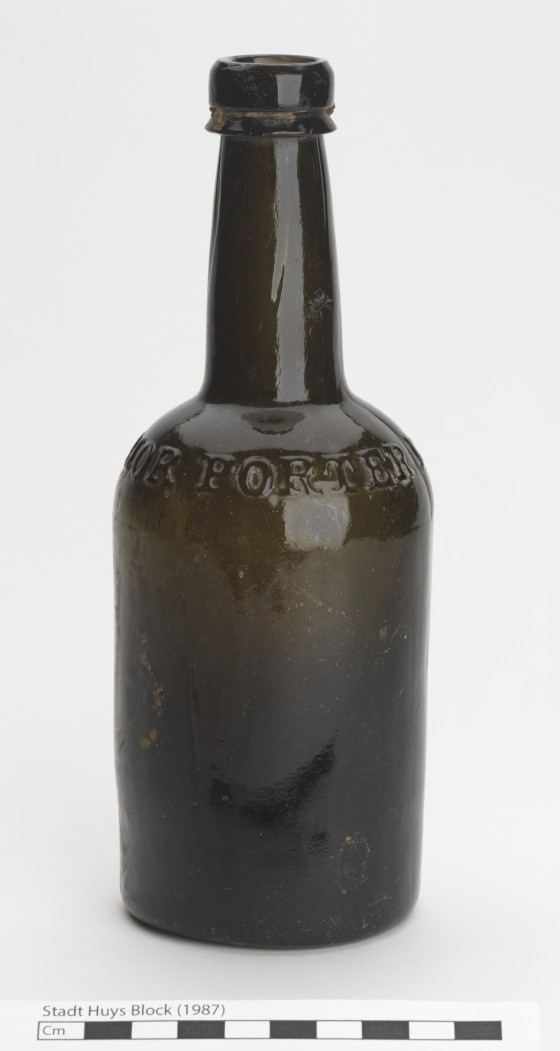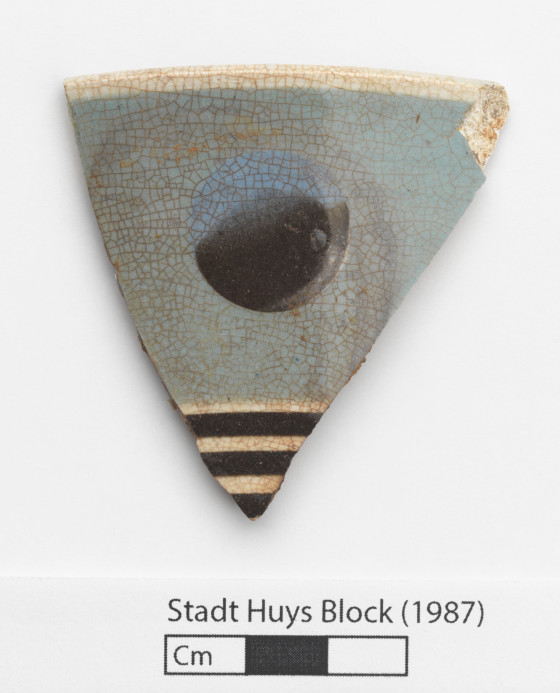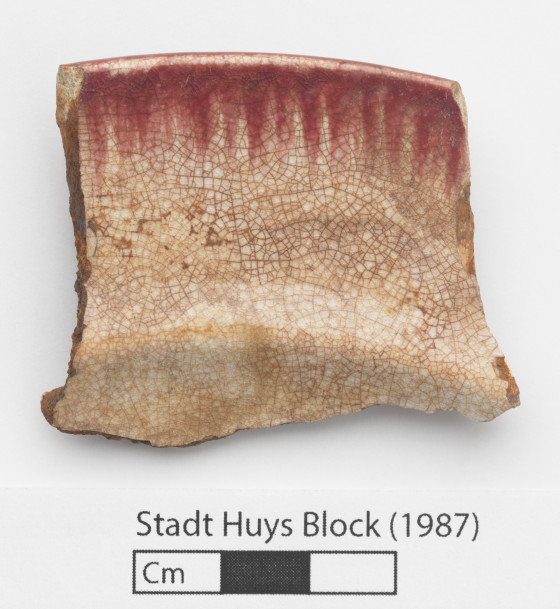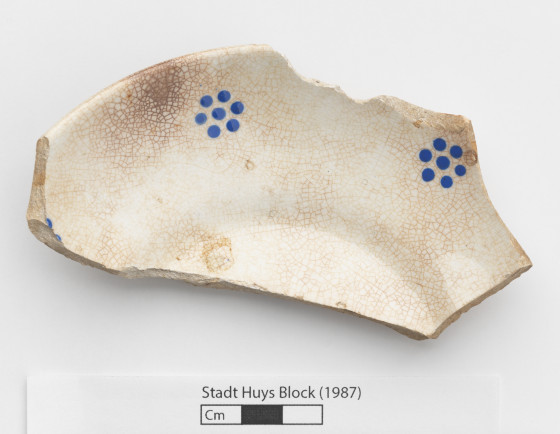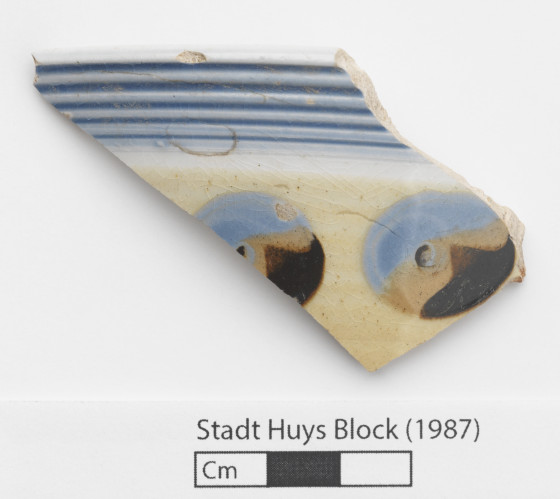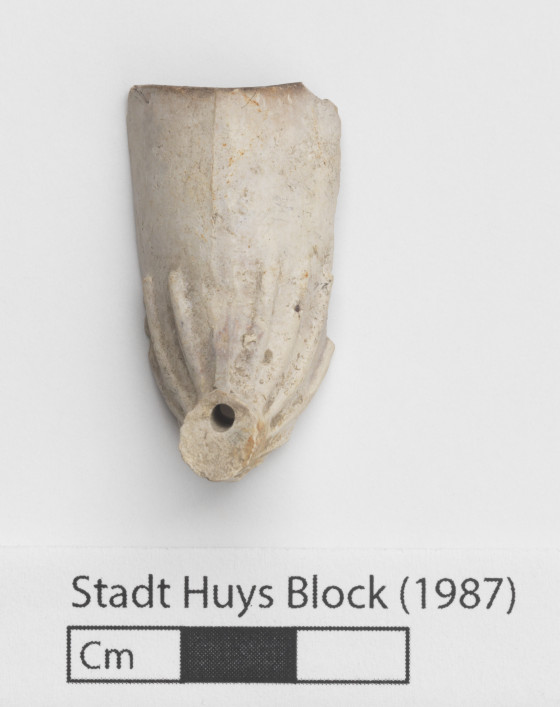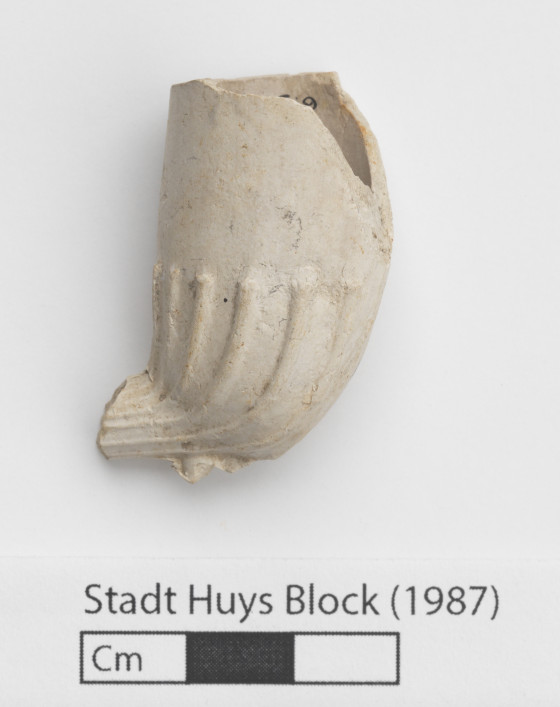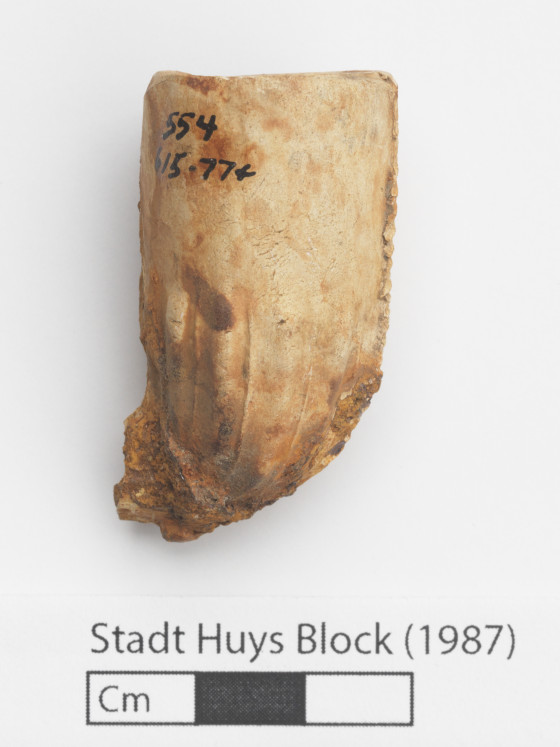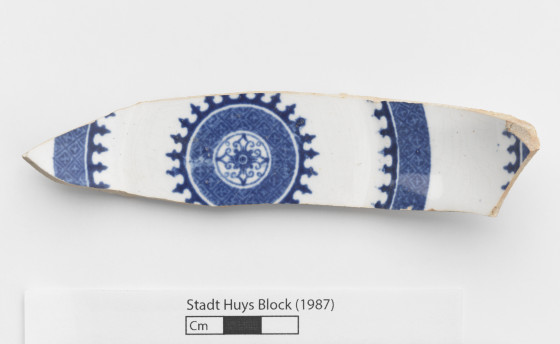These ceramic sherds of a blue transfer printed whiteware children’s mug were recovered from Stadt Huys Block 554-615. The sherds have a majority mean ceramic date range of 1836 to 1851. An inscription, “William,” is wreathed by an abundant garland of grapes and flowers, which tells us the mug was intended for a young boy named William. However, the mug never made it into his hands. Rather in 1846, the mug was discarded in a storage area by Underhill and Company crockery, a ceramics distributor located on Pearl Street, New York. This "William" mug is one example of many nineteenth-century ceramic vessels made for children. The ceramics were made in Staffordshire, England perhaps by children, highlighting contradictions of nineteenth-century beliefs related to children and childhood. Once exported to New York, the mug became a consumer product marketed to a middle- to upper- class mother for her child; an educational tool used to teach a child how to individually use and identify with ceramic vessels during family meals; and a symbol and activator of codes, values, and behavior of a genteel middle-class lifestyle, which collectively worked to maintain a family’s middle-class status.
-
Object number
615.17, 615.20
-
Date made
1836 - 1842
-
Decoration
-
Color
Blue
-
Animals/objects
Mug, Child's
-
Patterns
Floral
Line Engraved
-
Category
-
Class
Ceramic
-
Functions
-
Material
-
Context
-
Forms
Base/Body
-
Ware types
Whiteware
-
Techniques
Press Molded


